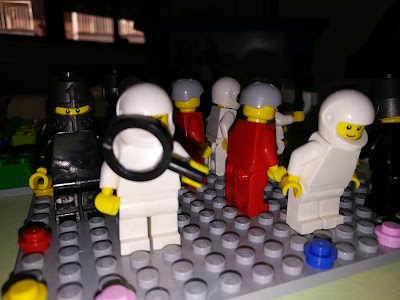Monday 27 November 2017
Sunday 19 November 2017
FLL: Water Our Most Precious Treasure. How Can We Keep Plastic Out of Our Ocean.
Although it is still too early to make a decision, our FIRST LEGO LEAGUE team is considering the possibility of carrying out a project related to water pollution. We share two videos that we have used to reflect:
on the importance of water,
and how to keep plastic out of the oceans.
Saturday 18 November 2017
Sweeper
To
continue our adventure with Lego our
pupils regularly have lessons with bricks. Recently the 4th graders
have had to build a sweeper – a cart combined with a broom. To check if it
works we spread out paper scraps on a table top. When we pushed the sweeper its
blades opened out and spun. The table top was clean again.
and Anna Dołżyńska
Friday 17 November 2017
Wednesday 15 November 2017
University of Salamanca
The UNIVERSITY OF SALAMANCA is the oldest university in Spain...; and one of the oldest universities in the world. I was founded in 1218, so next year, it is turning 800 years old.
To celebrate this important event, our students have watched this beautiful video...
Then, they have been thinking about how different the university was 800 years ago...
As a consequence. they decided to create a modern facade...
In the picture you can see a group of students working on their designs...
Monday 13 November 2017
Learning Designer.
The LEARNING DESIGNER is an online lesson planning tool. It is free, you only have to register, which only takes a few minutes. It helps you to think about the learning expirences you are planning for your learners.
An Easy Way to Call Out Your Students
Sometimes, when you are teaching young learners is difficult to choose students to participate in class... because they all want to participate. Here is an easy way to choose them and knowing if you have already called them or not:
1- Each student write his or her name on a popsicle stick.
2- Put all the sticks in a pencil holder.
3- Pick a stick and read the name.
4- You put that stick out of the pencil holder. In this way, you know that the names of those students you have not called yet are inside the pencil holder.
Sunday 12 November 2017
Disassembling Tens
In the pictures you can see second grade students working in groups of four: they are using Lego in order to assemble and disassemble numbers in UNITS AND TENS,
TASK 1:
Student number 1 thinks of a number: i.e. 34
Student number 2 represents the number with Lego blocks.
In this example, he needs three towers of ten (TENS) and four units.
Student number 3 disassembles one of TENS.
Student number 4 says how many TENS and UNITS there are.
In this case, there are 2 TENS and 14 UNITS.
TASK 2:
Student 1 thinks of a number with TENS and UNITS.
Student 2 thinks of another number with TEN and UNITS.
Student 3 makes the ADDITION.
He must bear in mind that if the number of units is bigger than ten, he will have to assemble a new tower.
Student 4 says the result,
Friday 10 November 2017
Thursday 9 November 2017
The Police come to School
The police have visited our school. They have explained a lot of things about our safety: when we walk, on a bike, in a car ...
We have really enjoyed the explanations ... but when we have ridden in the police van or on the motorcycles it has been incredible.
Another reason for the presentation to be special was that the policeman who gave it was Alicia's father, one of our classmates.
The Solar System.
As you have seen in previous posts, my students in second grade have been studying The Solar System. In the photographs, you can see some representations that have been made using Lego Story Starter.
On the other hand, fifth grade students have carried out a project on the same subject, and have made models to represent the Solar System.
For this reason, today fifth graders have presented their models to second graders.
It has been an experience that the students themselves have valued very positively: some, as public, enjoying the explanations of their older colleagues; and the others because they have had an audience that has enjoyed their models and their explanations. A very positive reinforcement for both learning processes.
Subscribe to:
Posts (Atom)





































